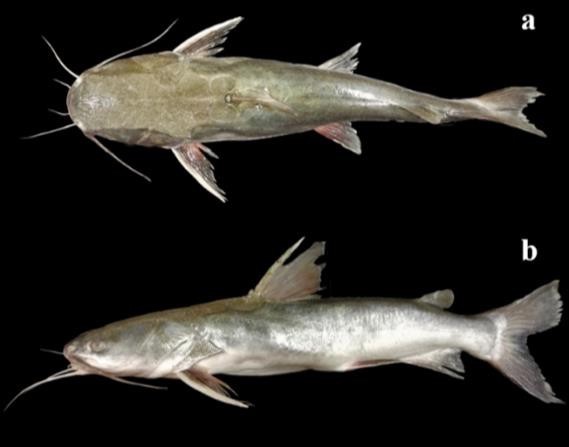This research group focuses on investigating biology of aquatic organisms and their relationships with environments to better inform scientific understanding and management of biodiversity. We work on aquatic organisms ranging from microbes to shellfishes and fishes, and aquatic ecosystems as diverse as freshwater, brackish water, coastal and terrestrial areas.
C. Neurohistochemistry study on taste sensory neurons of indigenous aquaculture species in Malaysia
 Introduction:
Introduction:
Fish brain and sensory organs vary highly between different species and even within the same species. Fish brains which can be categorized and divided into several main structures that control specific cognitive functions; namely the olfactory bulbs, telencephalon, optic tectum, mesencephalon, diencephalon, pituitary, hypothalamus, cerebellum, dorsal medulla and brain stem. The involvement between the main senses in fish to the morphology and the structure of fish brain can be understood, by observing the type and species of fish, its habitats, feeding habits and water current in the environment. To objective of this study is to understand the behaviour and habits of local catfishes and this may serve as a significant background reference and informative characters for understanding the biology, feeding, mating and other behaviour of fishes. This project was funded by Ministry of Higher Education Malaysia under the Fundamental Research Grant Scheme (FRGS) FRGS/1/2016/WAB01/UPM/02/17.
 Pictures:
Pictures:
 Sagor sea catfish, Hexanematichthys sagor in (a) dorsal and (b) lateral views
Sagor sea catfish, Hexanematichthys sagor in (a) dorsal and (b) lateral views
 Publication
Publication
 Journal
Journal
- Denil, N.A. & Rahman, N.E.A (2019) Studies on the Brain Morphology of African Catfish, Clarias gariepinus. Natural Resource and Biodiversity Vol.III. Universiti Putra Malaysia Press. 108-118.
This study examined the brain morphology of African catfish, C. gariepinus. A quantitative observation was made of both relative brain size and the relative development of five brain areas; which are the integration areas (1. the telencephalon, and 2. the corpus cerebellum) and the sensory brain areas (1. the olfactory bulbs; 2. optic tectum; and 3. octavolateralis area, which receive primary projections from the olfactory epithelium, eye and octavolateralis senses, respectively). The complexity of the brain structure of C. gariepinus can be seen from the brain areas observed. The facial lobe of C. gariepinus is enlarged, which correlates with the high number of taste buds scattered across their entire body surface and on their four pairs of barbels. The enlargement of cerebellum is also observed and is concluded to be vital in their sensorimotor integration whilst swimming in their complex habitat environment; shallow, swampy area with soft muddy substrate. It is also observed that C. gariepinus brain length correlates with its total length, indicating a function of allometric growth and habitat complexity. The findings of this study may provide important insights into the biology of fishes and may serve as a reference background for future works on brain morphology of fishes.
 For more further enquiries:
For more further enquiries:
Dr. Nurdiyana Binti Ahmad Denil
Senior Lecturer
Department of Animal Science and Fisheries
Faculty of Agricultural Science and Forestry
Tel: +6086 8558369
Email: nurdiyana@upm.edu.my
Updated:: 07/09/2020 [lanz]
MEDIA SHARING











 Introduction:
Introduction: Pictures:
Pictures: Sagor sea catfish, Hexanematichthys sagor in (a) dorsal and (b) lateral views
Sagor sea catfish, Hexanematichthys sagor in (a) dorsal and (b) lateral views Publication
Publication Journal
Journal For more further enquiries:
For more further enquiries:


















